culture, hakama, kimono, tradtional japanese clothing
A Look into Male & Female Traditional Japanese Clothing
Linh Le
Posted on September 26, 2022
Share:
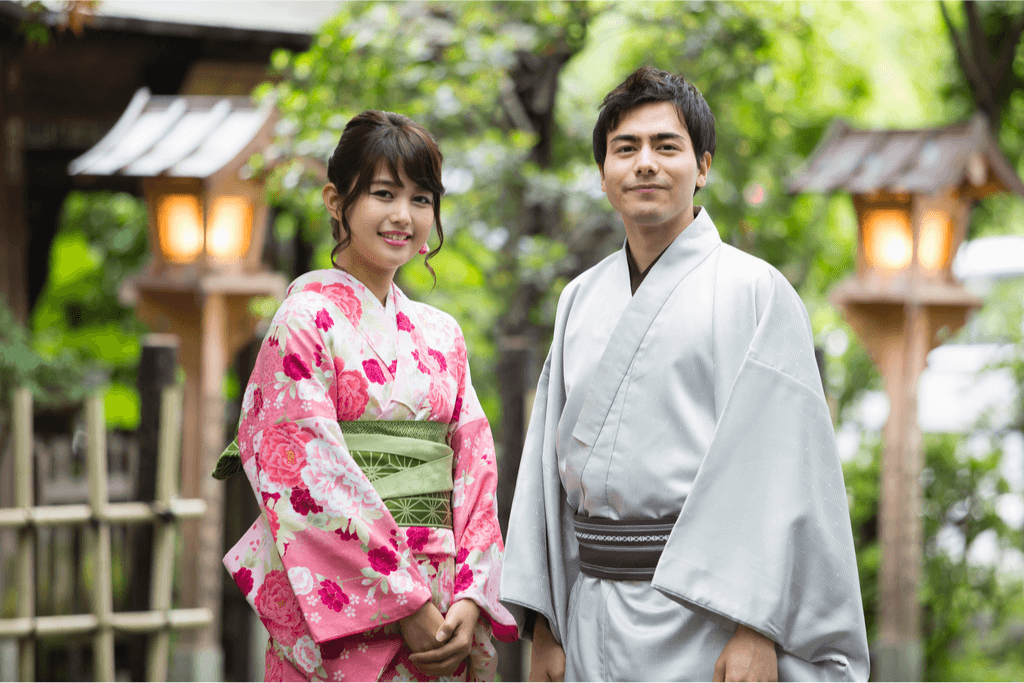
When it comes to traditional Japanese clothing, we usually only think of kimono. However, there are all kinds of attire. While some are not as popular as they used to be, many Japanese people still wear them on special occasions. Let’s learn more about the history of traditional clothing from Japan!
Kimono
The modern kimono dates back to the Heian period (794-1185). Kimono materials consist of textiles, cotton, linen, and silk. Depending on the type of fabric and style, the price of a kimono is also different. Its cloth is around 12-13 m long, 36-40cm wide, cut into eight pieces, and sewn together to create the basic shape of a kimono. The fabrics are stacked and fixed by the Obi.
Not only is it unusual from the design, but the process of wearing kimono also requires understanding the proper steps. It usually has only one size, and the wearer needs to tie it to fit the body. Men’s kimono, on the other hand, are usually dark blue or black. Instead of an elaborate pattern, they have a simple embroidery of their family crest. On the other hand, kimono for women have many types depending on the person who wears them, the time, the event, and the location.
Different Types of Women’s Kimono
Furisode is a garment for single young girls with bright colors and many decorative patterns on delicate silk, and its most notable feature is its long and wide sleeves. This kimono is for important events such as the Coming of Age ceremony (January 20th) and graduation ceremonies in March and April.
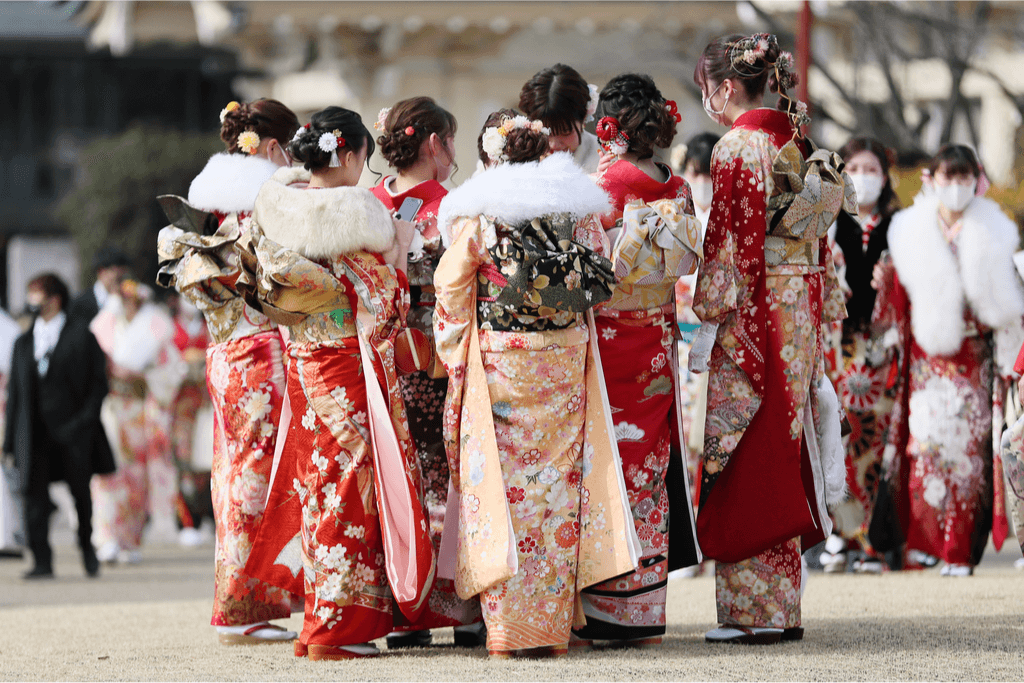
Tomesode is a formal robe for married women. Unlike furisode, its sleeves are short, and the primary color in the body of the kimono is black. There might be simple patterns with elegant colors near the bottom of the kimono.
Houmongi is primarily for married women. They usually wear them in tea ceremonies, family gatherings, or ceremonial visits. The houmongi is similar to a beautiful painting as its patterns are all connected to create a big picture. In the past, Japanese parents usually considered Houmongi as a gift to their daughter when she got married.
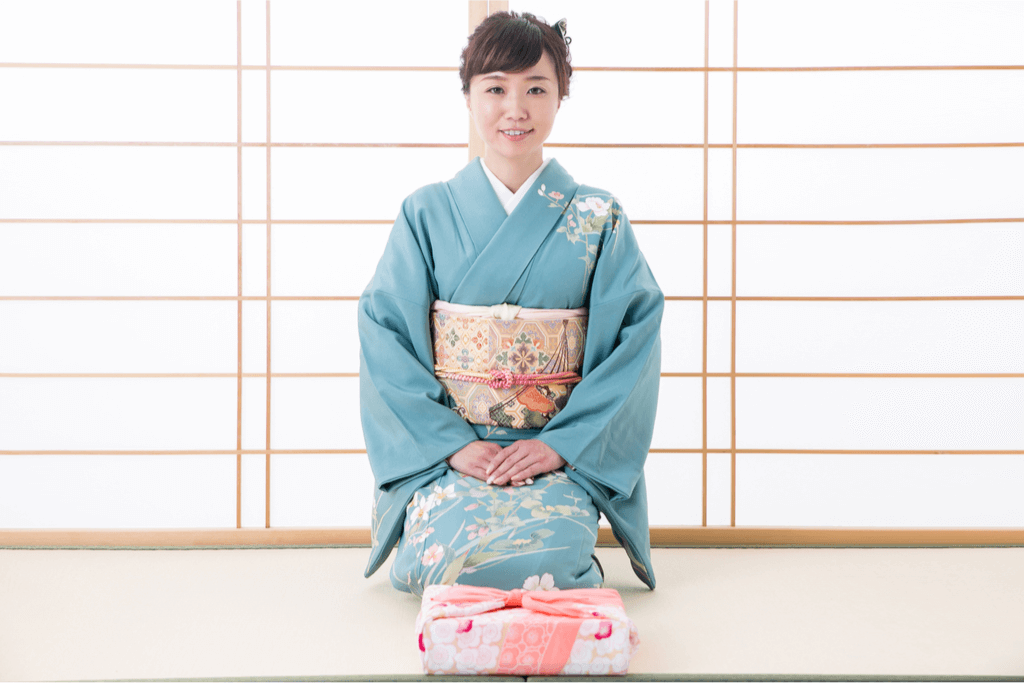
Tsukesage is traditionally for parties, flower arrangements, and friends’ weddings. It has a single and bright pattern running along the body and back of the shirt.
Komon is worn on regular days and is decorated entirely with small and gentle motifs.
Tsumugi is worn on casual occasions but with brighter and more simple patterns.
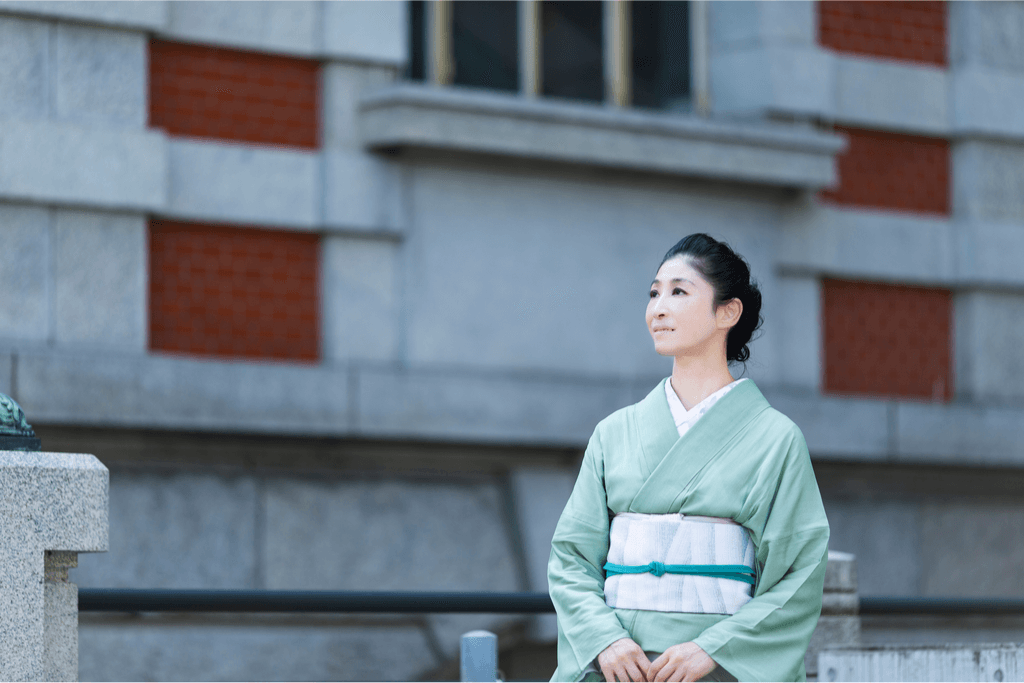
Are you an enthusiast of Japanese culture but hardly get any chance to experience it? Check Sakuraco out! Sakuraco sends traditional Japanese sweets & snacks from across Japan to your door so that you can explore traditional Japanese taste at your most convenience!
Uchikake and Shiromuku
Uchikake is used as a jacket over the Japanese bride’s kimono on the wedding day. It’s usually red and designed with floral motifs, lovebirds, and cranes. In Japanese mythology, cranes are thousand-year-old creatures that symbolize longevity, bringing luck to couples.
Today, most Japanese brides choose the traditional white Japanese uchikake dress because of its pure and elegant beauty.
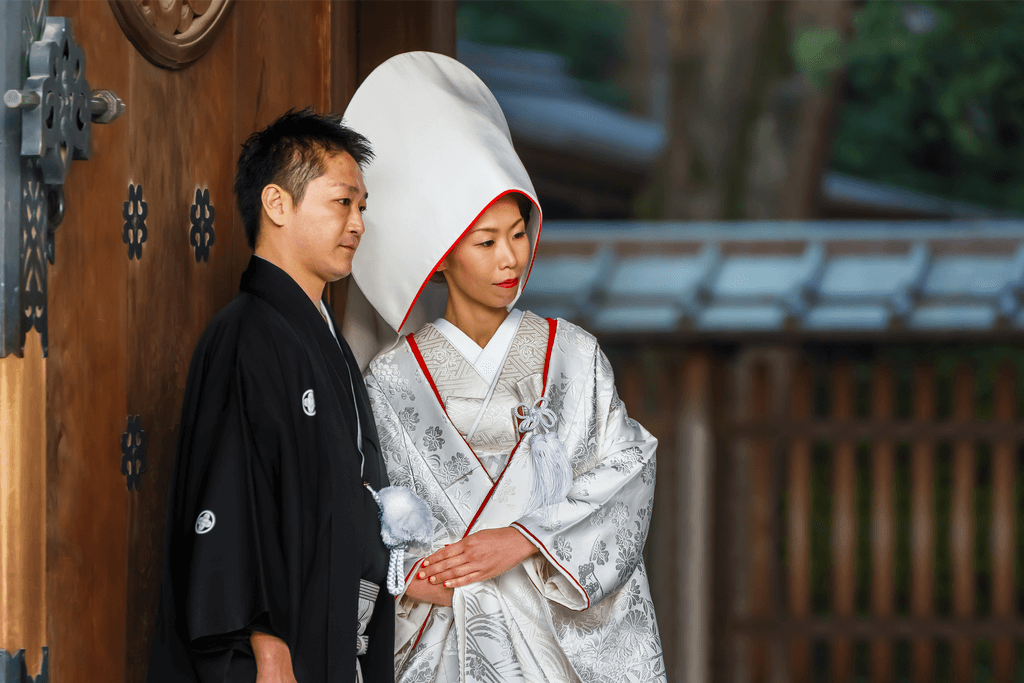
Under the uchikake, the brides wear shiromuku – the most formal, pure white kimono. Although simple, it has a deep meaning: to present the bride’s beauty in her purest form and to symbolize the beginning of a new journey.
Shiromuku has a round tail and is long enough to reach the ground. It also comes with a white cloth headband called tsunokakushi.
Yukata
Yukata has a similar shape to kimono but uses cotton fabric, thin and light, easy to absorb sweat, and brings comfort to the wearer. Thus, the yukata is for summer and spring due to warmer weather and more effortless movement.
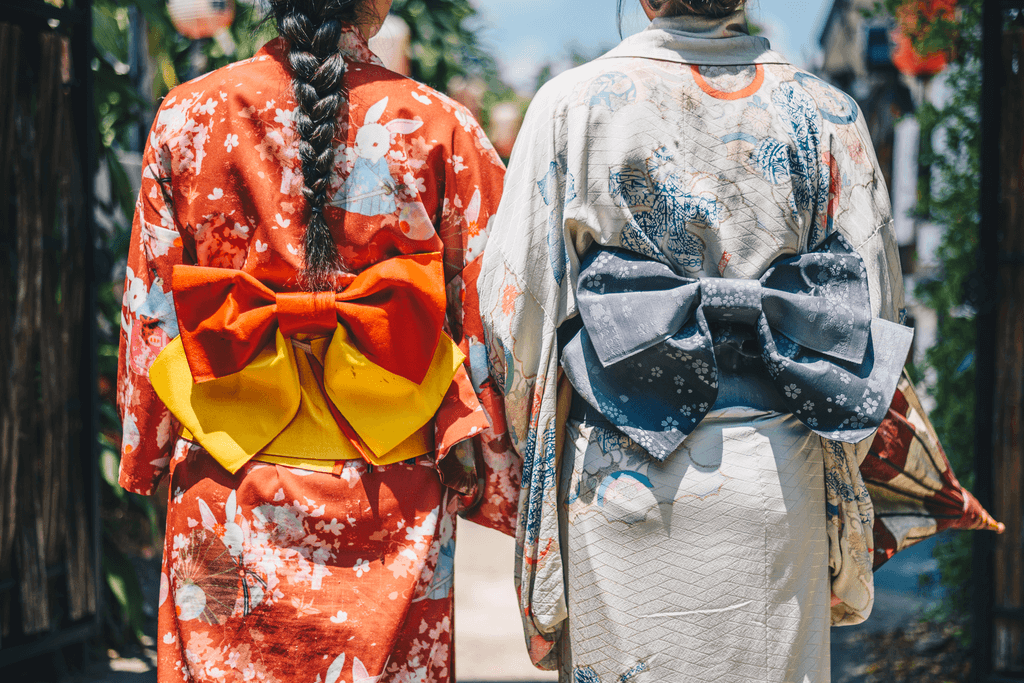
Nowadays, yukata are at summer festivals or after bathing. In the past, Japanese people wore yukatas as pajamas with simple seams and colors; today, it has become a favorite summer outfit of Japanese youth, so it gradually becomes more eye-catching.
In addition, people wear yukata at Bon-Odori, a famous Japanese summer festival. Japanese tourists can also see people wearing yukata at traditional local inns especially.
Hakama
Hakama are traditional Japanese trousers with pleated, flowing legs resembling a suit. Though woodcutters were the first to wear them, hakama is a mainstay in Japanese fashion.
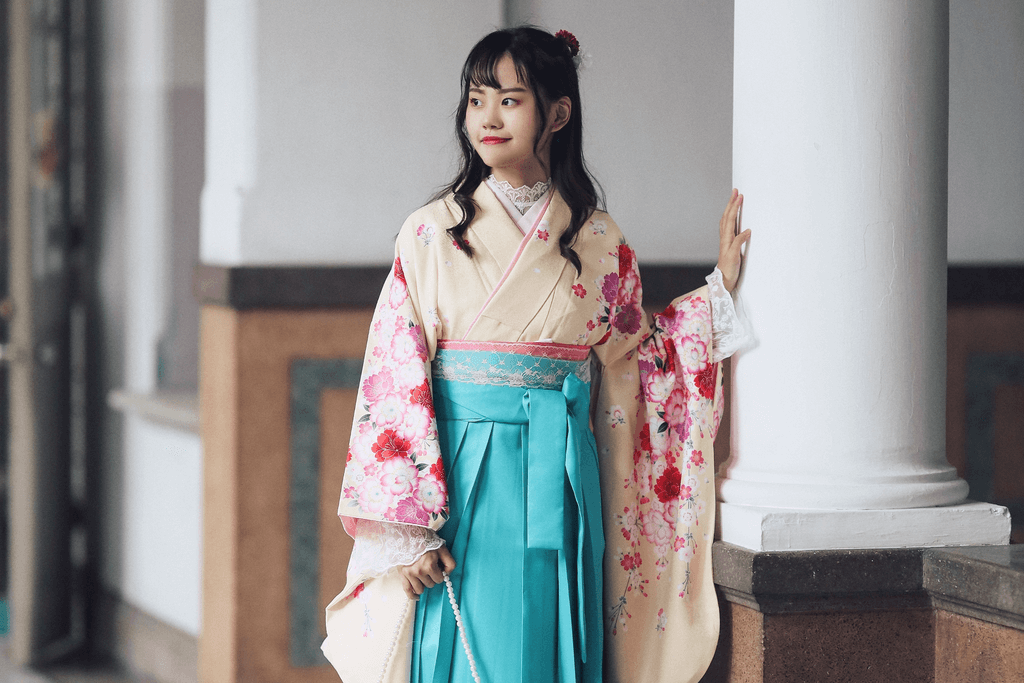
Men usually wear them in most situations, and female graduates on occasion. Athletes in classic Japanese sports such as archery or judo wear hakama. However, there are also contemporary versions of hakama, and trendsetters wear them with everyday Western clothing.
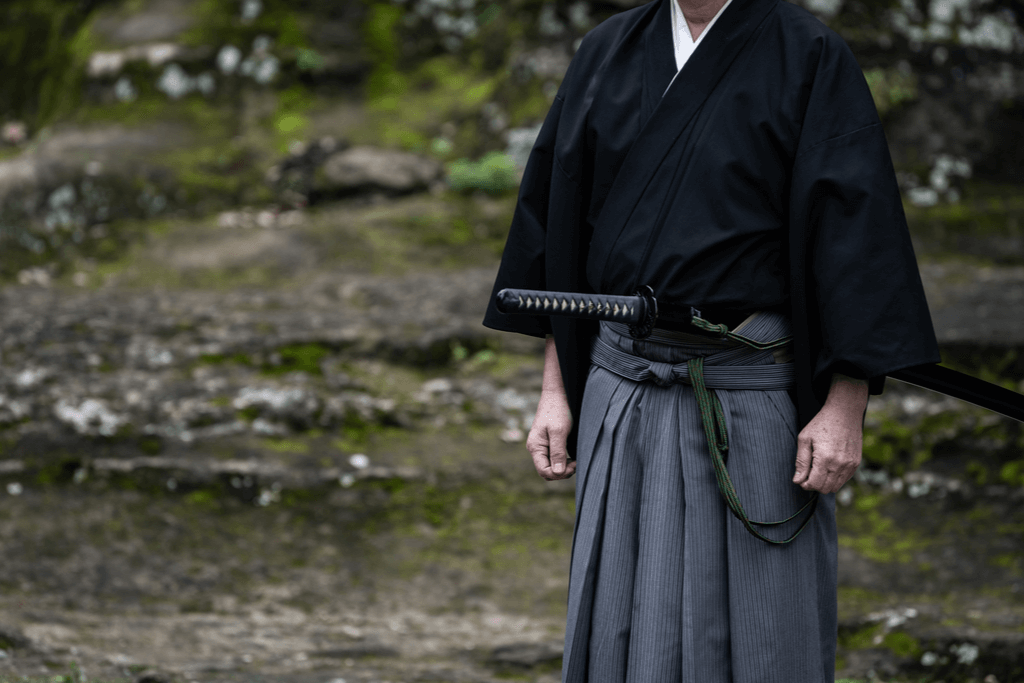
Fundoshi
Fundoshi is traditional Japanese men’s clothing with a loincloth commonly worn by men in manual labor. If you can attend the Hakata Gion Yamakasa in Fukuoka, Kyushu Prefecture, you might see men and boys wearing fundoshi during the festival’s activities.

Hanten
A Hanten shirt is a type of clothing that is very popular among Japanese commoners; that started in the Edo period (1603-1867) and gradually became more widespread in the 18th century.

Hanten is a type of everyday jacket by vendors or artisans in craft villages. This jacket has a collar sewn with black satin fabric, with a tie in the middle, suitable for everyone, regardless of gender.
Because the Hanten shirt is relatively thin, so to wear it in winter, people will braid a kimono bra both inside and outside to help keep the body warm.
Happi
Originally domestic helpers wore happi, proving they belonged to a particular family. Later, stores gradually used happi shirts to replace the organization’s uniforms to present a collective.

The first happi shirts came from cotton fabric in brown and indigo, but now to meet current fashion needs, the shirts have more eye-catching colors.
Which of these types of traditional Japanese clothing have you heard of before? Have you ever worn them as well? Please share your experience with us in the comments below!

Discover authentic flavors with Sakuraco
Get Sakuraco 

Discover authentic flavors with Sakuraco
Get Sakuraco 
Related Articles

Steam Train in Shizuoka: Riding the Oigawa Railway
For travelers who love history, beautiful views, and cozy retro vibes, this steam train is one of Shizuoka’s most charming treasures, with some of the best views. If you want to know more about this train, keep reading below!

Nara Japan: The Amazing Legend of the Sacred Dragon
In Japanese culture, dragons are spiritual beings that represent strength, prosperity, and a harmonious balance with the natural forces. Nara, Japan, has a unique story associated with sacred ponds and revered shrines throughout the region.

Nambu Tekki: Morioka’s Amazing Iron Craft
In the historic city of Morioka, Iwate Prefecture, a craft with over 400 years of history continues to captivate with its rustic beauty and practical charm. Nambu tekki, or Nambu cast iron, refers to traditional ironware, such as teapots, kettles, and decorative pieces, that embody the spirit of Tohoku craftsmanship.

Ebisu: The Cheerful Guardian of Luck and Prosperity
Religion in Japan involves a dizzying array of spirits and beings. These gods are inspired by ancient tales and used to symbolize nature’s bounty. However, they also profoundly impact daily life and are often sought out for help in challenging times



